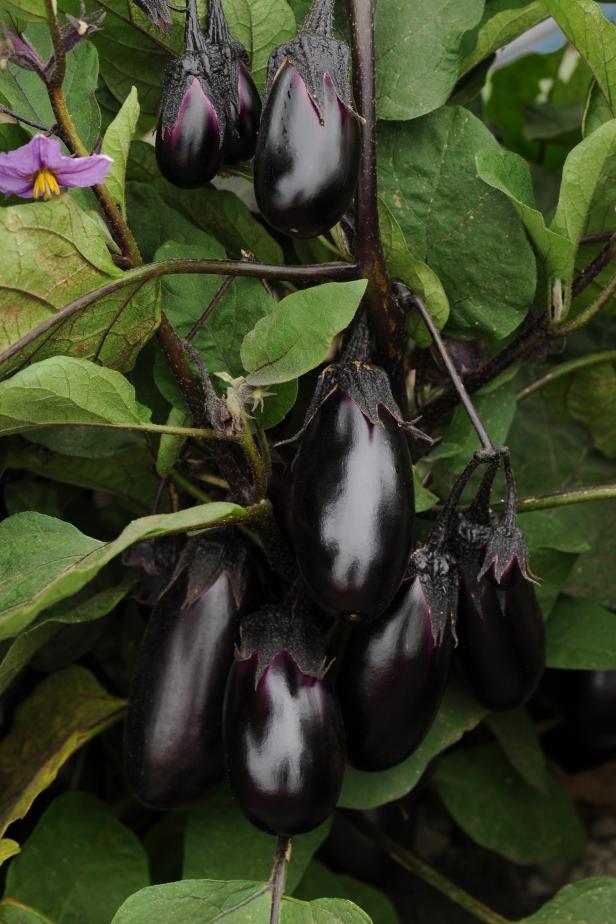How to Freeze Eggplant
Homegrown eggplant is delicious and then some. When you have more than you can eat, learn how to freeze eggplant for later use.

Shutterstock/Nataly Studio
Fresh eggplant is fabulously tasty and so versatile in the kitchen. The only problem is that it keeps just a few days before it turns bitter. Freezing eggplant is really the only option for preserving this colorful favorite. The flesh is too dense to can safely — even for pressure canning — without pulverizing it beyond recognition. So forget your canner, and learn how to freeze eggplant using several different methods.
Freeze Vegetables From Your Garden
See All PhotosSteps to Freezing Eggplant

Ball Horticultural Company
Pick the Best Produce
The secret to freezing eggplant successfully is starting with the freshest fruits you can find. For homegrown crops, pick eggplants before seeds mature (as seeds mature, the fruit turns bitter). You can also watch for fresh eggplant at your local farmers' market. Always choose eggplants with a uniform color.
Eggplant Varieties to Freeze
While all eggplants become more watery after freezing, some types freeze better than others. Black varieties usually hold up better after freezing than Chinese and Thai eggplants. Think about the final use before becoming overly concerned that you've grown or purchased the wrong type. Thawed, watery eggplant works fine in dips, pasta sauces, soups, or Indian spiced eggplant (baingan bharta). If you intend to fry the eggplant later or layer it into vegetable lasagna, you can bread it before freezing.

Wash and Peel the Eggplant
Can you freeze eggplant using traditional blanching methods? Yes — begin the process with washing and peeling the fruits.

viniciusfrp / Shutterstock.com
Slice the Eggplant
Slice peeled eggplants into 1/4-inch-thick slices. Peel and slice enough eggplants for one blanching batch at a time. Work quickly; eggplant starts to turn brown if the slices are exposed to air for more than about 30 minutes.

Debbie Wolfe
Blanch the Eggplant
For blanching, add one-half cup of lemon juice to one gallon of water, and bring it to a boil. Blanch the eggplant slices for 4 minutes, cool, and package in freezer bags. Remove as much air as possible before sealing bags.
Prep and Freeze
If you plan to use the frozen slices for making vegetable lasagna or eggplant parmesan, you can batter and bread the slices after blanching, wrap in wax paper, and freeze. Simply use your favorite batter and breading recipe. To fry or bake slices later, pack them in layers separated by wax paper before loading into freezer bags.
You can also tackle freezing eggplant by cooking it prior to freezing. Cooking methods to use include grilling eggplant slices or roasting whole eggplants. Oven-roasting is easy. Prick whole eggplants multiple times with a fork, and roast them at 400ºF until they collapse. Cool, then scoop out the flesh and stash it in freezer bags or containers. Use this eggplant in stews, chili, dips, or ratatouille.
Eggplant Recipes
Cook and Freeze Finished Eggplant Dishes
If time and freezer space permit, go ahead and prepare your favorite eggplant dishes, such as caponata, moussaka, eggplant-infused tomato sauce, roasted eggplant soup, or ratatouille. Freeze appropriate serving-size portions of these items in air-tight containers. For best flavor, use frozen eggplant within nine to 14 months.
How to Freeze Vegetables
Learn methods for freezing vegetables so you can have fresh taste long after the growing season ends.

.-Battle-on-the-Beach-courtesy-of-HGTV.-.jpg.rend.hgtvcom.196.196.suffix/1714761529029.jpeg)



















































